Did History & Law Really Intend For Cyclists To Ride Far To The Right?
You see it all the time: Cyclists riding on the far right edge of traffic lanes. That’s because of cyclist far right law. Right?
I don’t think so.
The most misunderstood traffic law in history.
In fact, I’ve come to believe that FTR (far-to-right) law for cyclists may be the most misunderstood traffic law in history.
Having read more statutes than I cared to during my law enforcement career, it dawned on me that there were curious similarities in several laws. This made me question the origin of our nation’s cyclist “far right” laws.
In Minnesota, where I live, I noted familiar language in the 169.18 Driving Rules section. This is from Subdivision 10, the “slow moving vehicle” statute:
Upon all roadways any vehicle proceeding at less than the normal speed of traffic at the time and place and under the conditions then existing shall be driven in the right-hand lane then available for traffic, or as close as practicable to the right-hand curb or edge of the roadway, except when overtaking and passing another vehicle proceeding in the same direction, or when preparing for a left turn at an intersection or into a private road or driveway, or when a specific lane is designated and posted for a specific type of traffic.
Looks familiar, doesn’t it?
But why were these traditional “slow moving vehicles” laws established?
What do they really mean today?
By definition, a “vehicle” is defined as “every device in, upon, or by which any person or property is or may be transported or drawn upon a highway, excepting devices used exclusively upon stationary rails or tracks.”
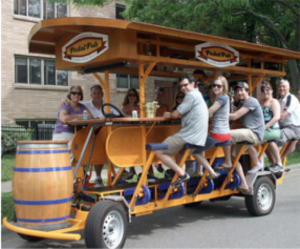
Pedal pub
When the traffic code was established, slow moving vehicles were most often horse-drawn wagons and buggies. Then and now, farm tractors — often pulling implements — regularly travel rural roads from farm to field and back. Other examples would include a motor vehicle with mechanical problems, unable to drive at “normal” speed. Today a slow moving vehicle might even include a “pedal pub” moving slowly down an urban street.
What do all these slow-moving vehicles have in common? They are all significantly wide — wider certainly than a single cyclist.
Wide vehicles are hard for motorists to see around
By requiring a slow moving vehicle to drive in the right hand lane — or “as far to the right as is practicable” — it better enables motorists who wish to pass to see around the vehicle to assess approaching traffic.
The reason for the FTR requirement was not to enable another vehicle to pass the slow vehicle in the same lane, but to enable faster motorists a safer means to pass. The slow vehicle was still afforded the ability to use the entire lane.
It’s easy to see around a cyclist
A single cyclist, even one controlling a lane, is usually easy to see around. When a driver’s view is blocked — often more by terrain than the cyclist — a lane-controlling cyclist can and should signal and communicate with motorists behind them when it’s safe and clear to pass.
In addition, Minnesota Statute 169.19 – Turning, Starting And Signaling. Subdivision 1 Turning at Intersection reads:
The driver of a vehicle intending to turn at an intersection shall do so as follows: (a) Except as otherwise provided in this paragraph, both the approach for a right turn and a right turn shall be made as close as practicable to the right-hand curb or edge of the roadway. When necessary to accommodate vehicle configuration, a driver is permitted to make a right turn into the farthest lane of a roadway with two or more lanes in the same direction in order to make a U-turn at a reduced conflict intersection, if it is safe to do so.
Sound familiar? It should. The reason for this law was to keep turning motorists from swerving across two lanes when making a turn. It also points out that large vehicles like trucks and buses may have to use more than two lanes to facilitate a safe and legal turn.
Once again, the reason for the FTR provision was most assuredly not to enable another vehicle to pass within the same lane.
Truth About Cyclist Far Right Law
Historically, it appears that bicycle laws were essentially a copy of other slow vehicle statutory language. It follows, then, that the language was not written with the intention of forcing cyclists to share a lane with another vehicle if it was not “ practicable” — meaning safe — for them to do so.
FTR language continues to cause confusion.
While cyclists in virtually all states clearly have the same rights and responsibilities as other road users, FTR language in the law continues to cause confusion among police, motorists and a large percentage of untrained cyclists.
Far too many cyclists, motorists and enforcement officers believe that cyclists need to ride as far to the right as possible, in order to allow a motorist to use the same lane. Neither history nor law support this.
As a member of an advocacy group trying to eliminate FTR language from Minnesota statutes, we’ve found it difficult to get enough politicians willing to make what seems like a monumental change in the traffic law. They, too, misunderstand the entire FTR statute regarding cyclists, so are hesitant to make a change they believe could potentially anger motorists.
It’s up to us. We who understand the true meaning of and intention for cyclist far right law must commit to educating cyclists, the public and all road users.
Historically, FTR was never about sharing a traffic lane. FTR is all about safety. Its roots were about enabling faster drivers to pass slow moving vehicles legally and safely in an adjacent or oncoming lane.

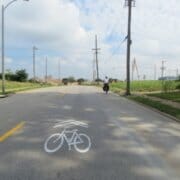
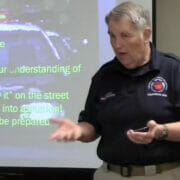
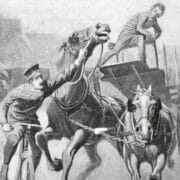
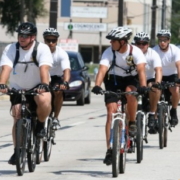



Well said, Kirby. And these are original insights. Thanks!
I agree with Mr. Schubert a thousand fold! Not only is Kirby’s piece interesting and insightful, but more importantly it puts the passion for FTR laws in an entirely new light. Good luck to Kirby and to the rest of us in persuading state legislatures to understand FTR laws from the perspective both of bicyclist safety and of the history of the laws themselves. And to change them!
Very well said Kirby! It was great seeing you at the IPMBA Conference in Saint Louis recently! Also great finally meeting Karen Karabell and her husband Harold!
Be safe out there everyone, in this land of FTR…
Why is there confusion about “shall be driven in the right-hand lane then available for traffic, or … “? If anyone, motorist or cyclist, drives anywhere in the right-hand lane she or he complies with the law. FTR would apply on unlaned roads such as dirt roads. This is reasonable since on a single track road opposite direction vehicle drivers need a commonly understood rule to facilitate a pass.
If you are tight to the right-hand curb, your only maneuvering option is to the left, which is usually into the traffic lane. Also, motorists will fly by if they think you are inviting them to pass by leaving space for them to do so. However, if you take your lane, you can pull to the right to allow the motorist to pass safely, once he has slowed to a safe passing speed. If he does cross into the next lane, whether an oncoming or parallel lane, he is more likely to pull into that lane completely and pass with adequate clearance. If he thinks he does not have to cross into the next lane, he is more likely to try to “squeeze by.”
Excellent piece. Great contribution to helping more bicyclists gain the confidence they need to be safe drivers of their bikes on any road.
I would love to hear your insights on the issue of riding 2 abreast vs. single file which is another one, especially during large group rides (fund raisers, etc) that infuriate motorists and cause much confusion among everyone. Sadly some established tour operators have apparently been so bullied by motorists and officials in the areas where they route their rides that they try enforce “ride single file” rules on their riders. Here’s one example day tour: https://www.aabts.org/one_helluva_ride.php
“Ride with the traffic and never more than two abreast. Move into single file when motorists or other cyclists approach from the rear.” I believe way too many riders and group leaders insist and expect everyone to fall into single file when someone yells “Car back!” which, with hills or blind corners ahead can greatly endanger the riders and encourages motorists to pass when they oftentimes shouldn’t.
Hey Tim, sorry for the delay. I like to keep people waiting. ? I looked at the link you shared. I’m with you on the concerns you listed. I suspect the organizer may have gotten complaints about cyclists riding two abreast, especially where there is only one lane each direction, and passing might be tough. There is nothing that keeps that single file line from taking the lane, especially if it is a narrow width lane of less than 14 feet wide. Single file doesn’t really mean safer if motorists still pass you in the same lane, and the they making buzz passes to both! It might be time to do some education to both the organizer of the ride, and perhaps clarify the law and concerns to the MI State Police or which every police agency is the primary law enforcement agency on the route. They may have received complaints, and like the people making the complaints they make not understand the law in its proper context either. That stuff is very rarely taught in any law enforcement training. I would suggest using this video to help in discussing or communicating your concerns. https://vimeo.com/272643165
Good article. I disagree on a cyclist signaling drivers behind when it is clear to pass though. Why take on contributory liability in the event that an overtaking car has an accident and then blames the cyclist for waving them on?
As demonstrated by a video in the CyclingSavvy online and in-person classroom course, not indicating when it is safe to pass may result in the motorist behind waiting too long, and then attempting to pass when it has become unsafe.
I indicate my suggestion to pass by looking back at the motorist, moving slightly to the right, and providing a friendly wave expressing my thanks for waiting. That’s not an explicit indication to pass, but the implication is there. My understanding is that the motorist is still responsible to pass safely, no matter what the bicyclist indicates.
I ride in Philadelphia. Motorists are inpatient at best. Taking the lane when riding by yourself feels dangerous. I wish it wasn’t so.
Hi Owen,
I love riding in Philly, and have had zero problems while doing so. After reading your comment, I’m going to make an assumption. I ask your forgiveness in advance if I’m wrong!
My guess is that you haven’t participated yet in a CyclingSavvy workshop. If I’m right, I wish you would – and then report back after you’ve had the opportunity to integrate savvy cycling techniques into your rides.
Having written that, I want you to know I hate direct sales. I wish we could simply inject savvy cycling into the bloodstream of every American. Then everyone would know how easy it is to courteously and cooperatively share our roads, and use special bike infrastructure safely and easily. :-)